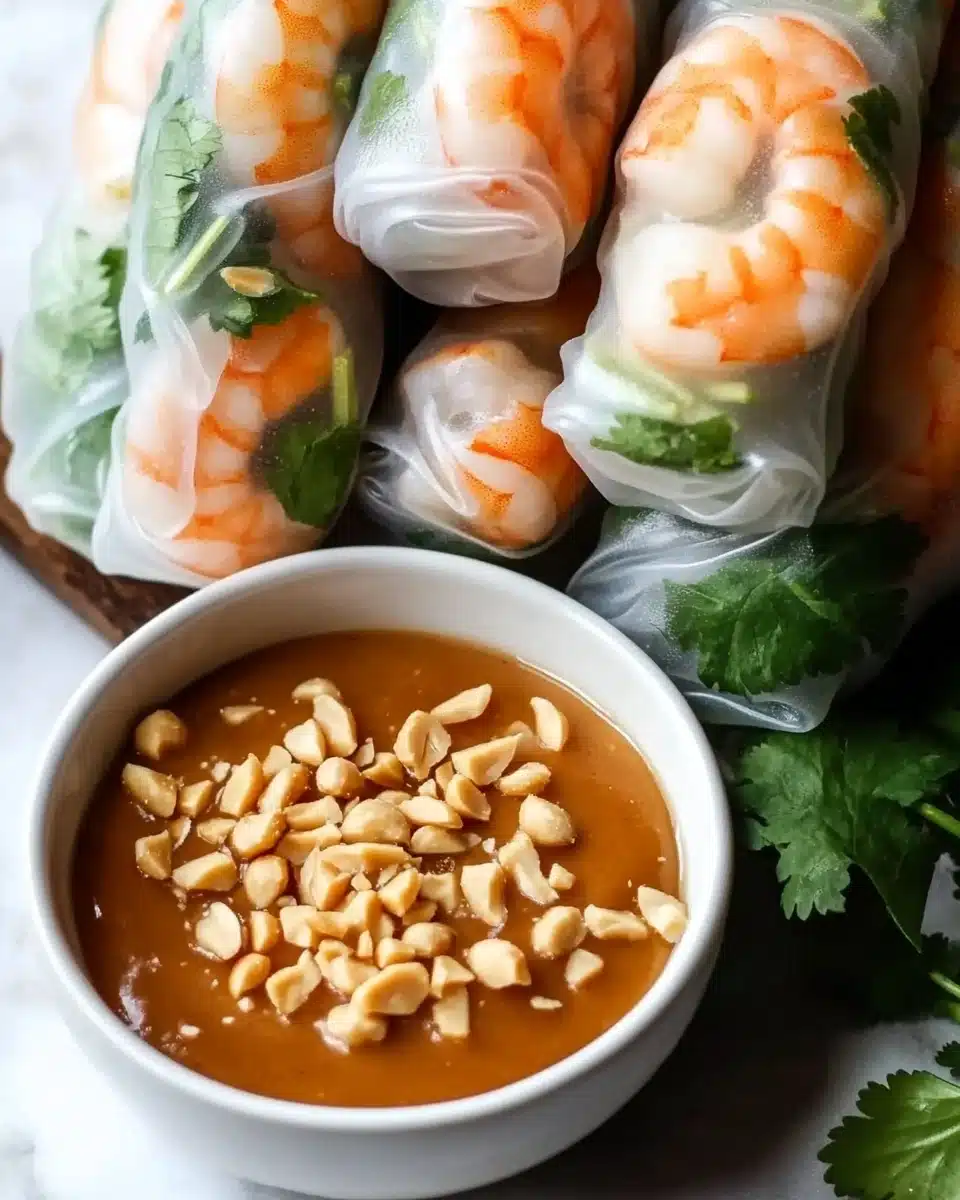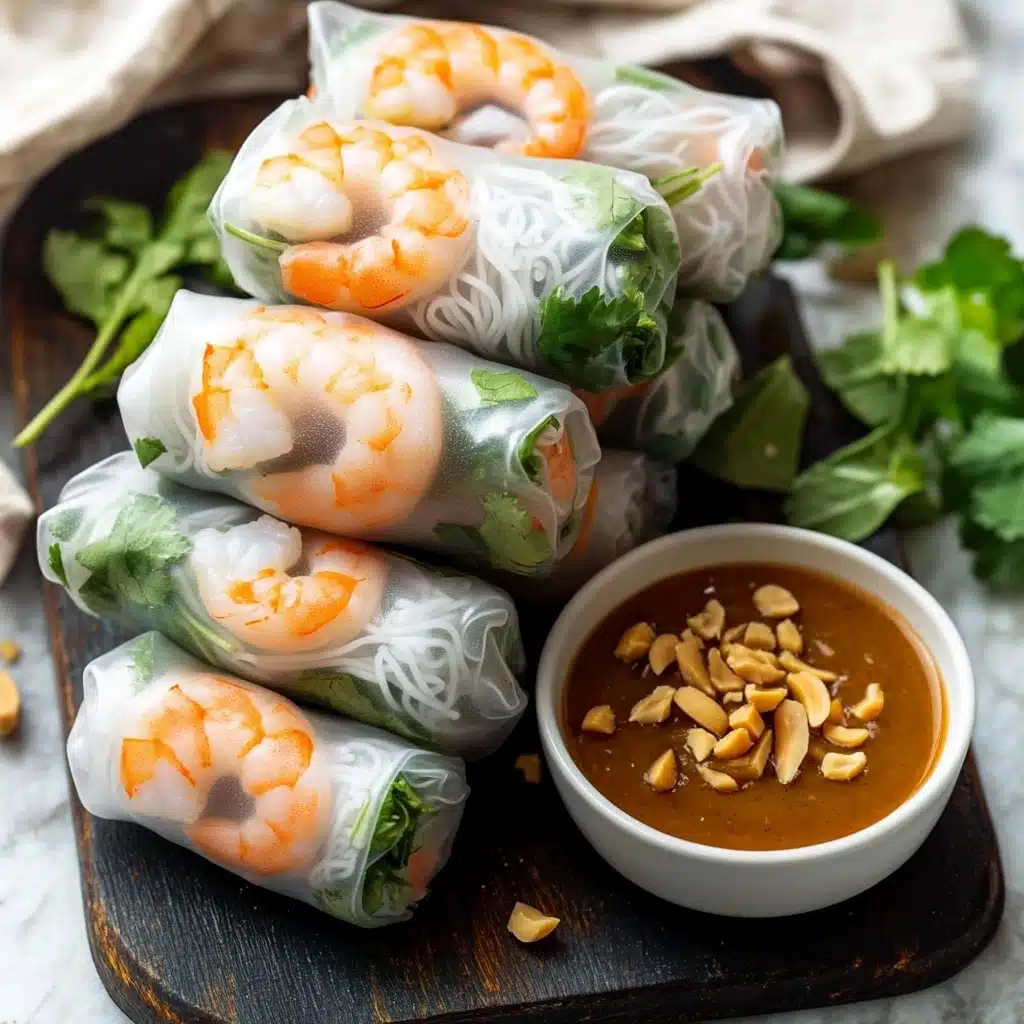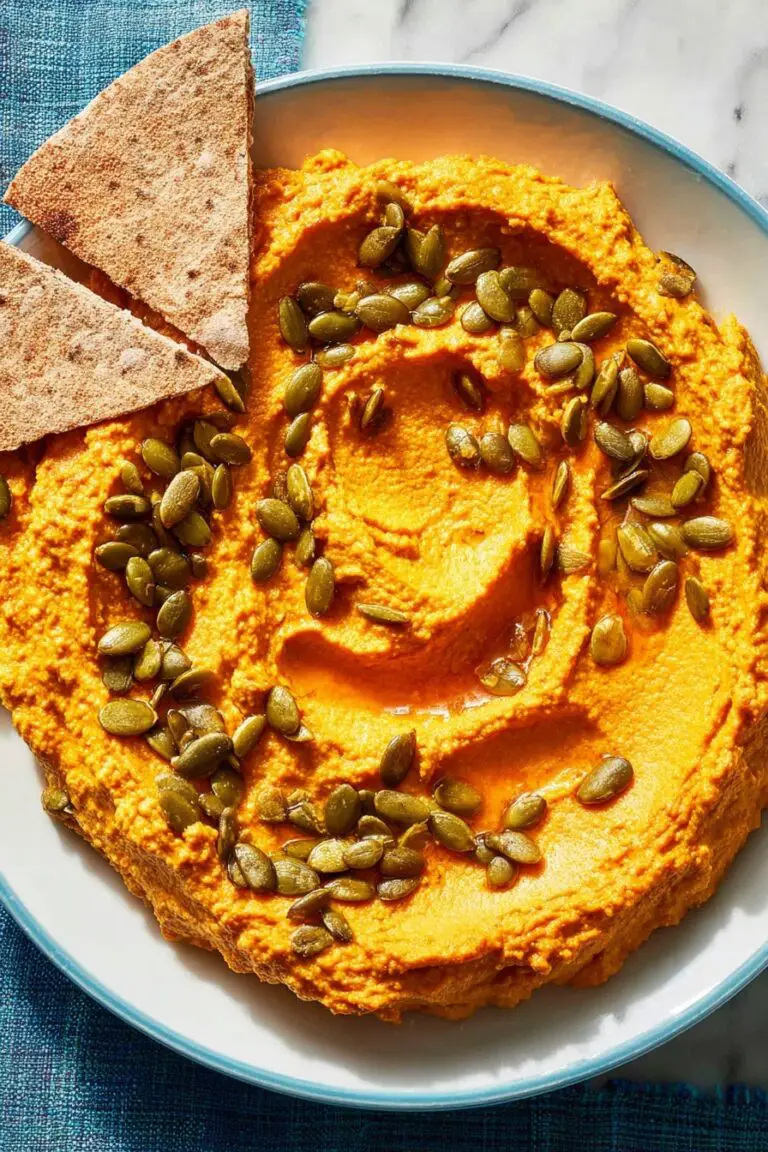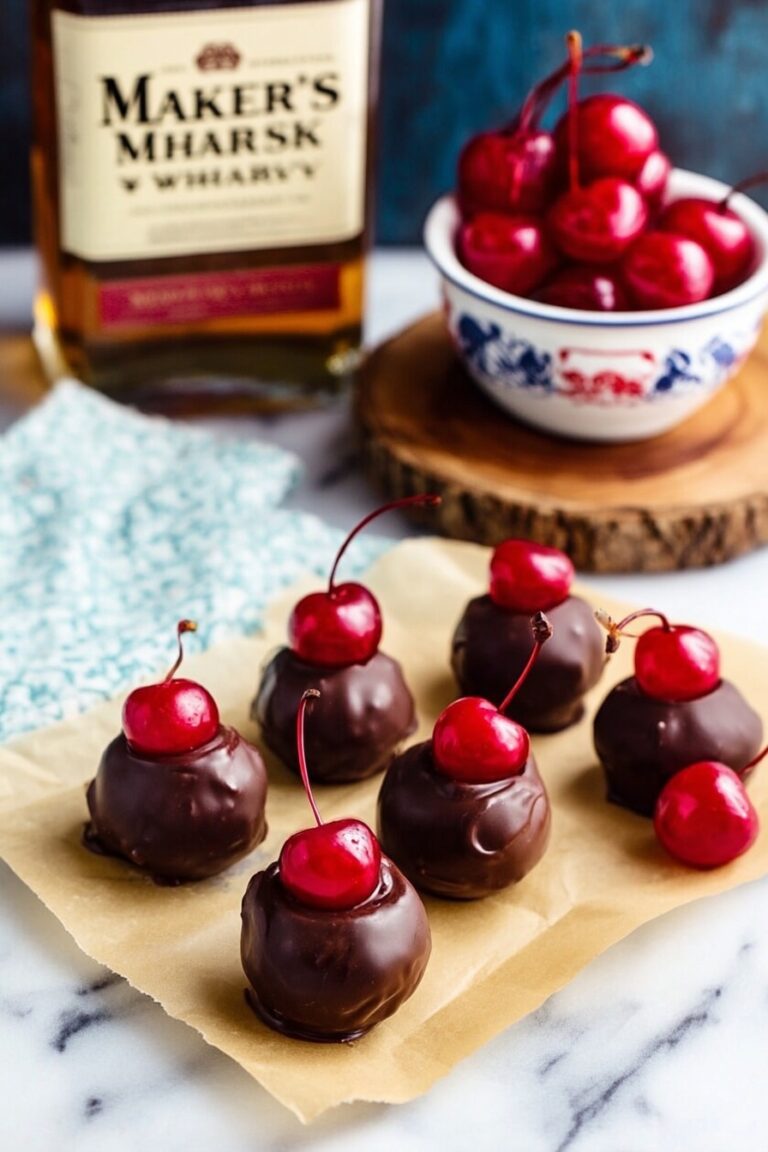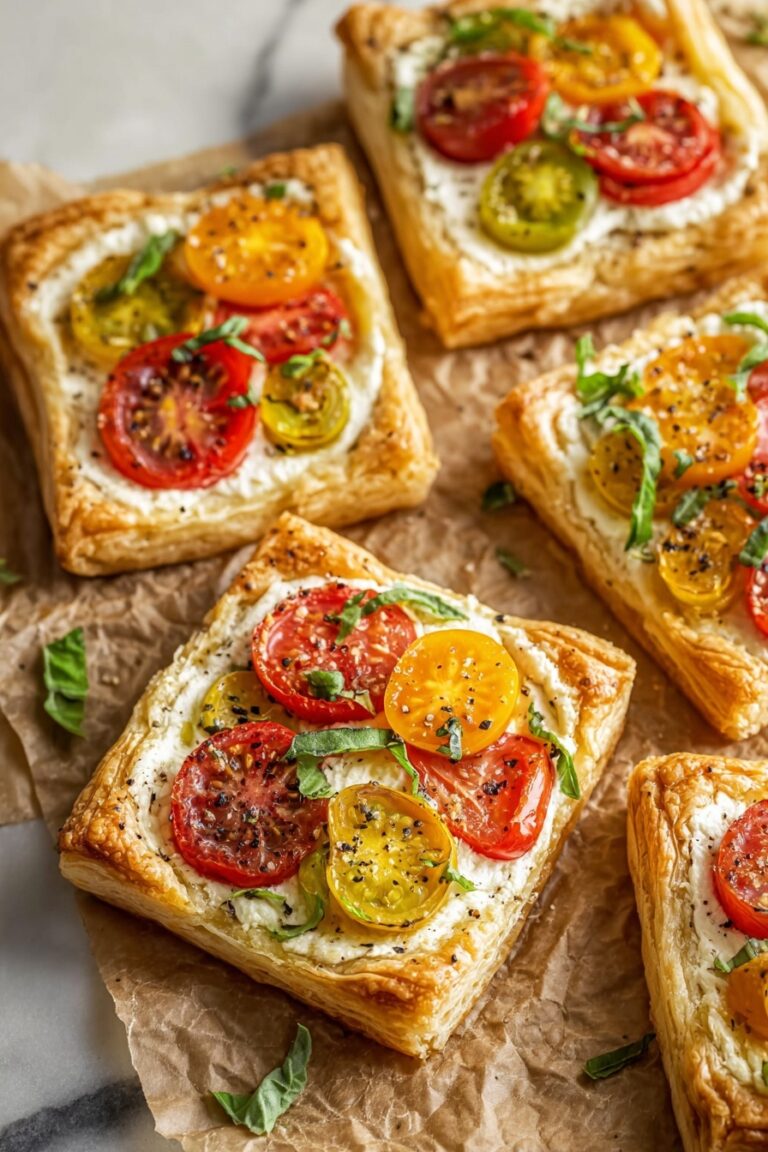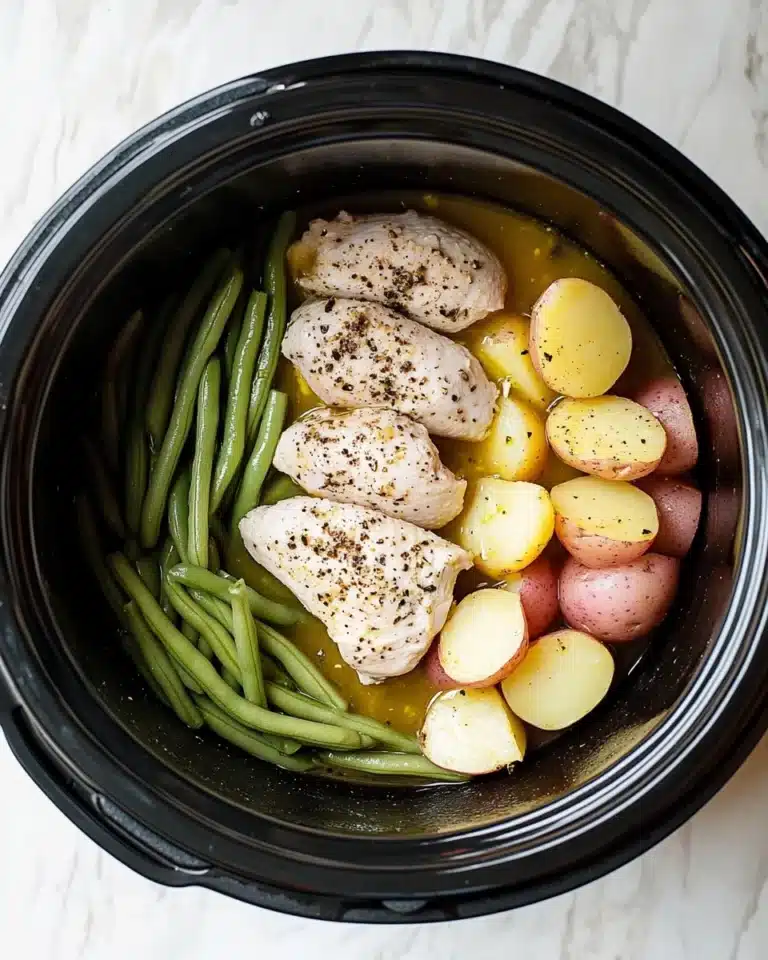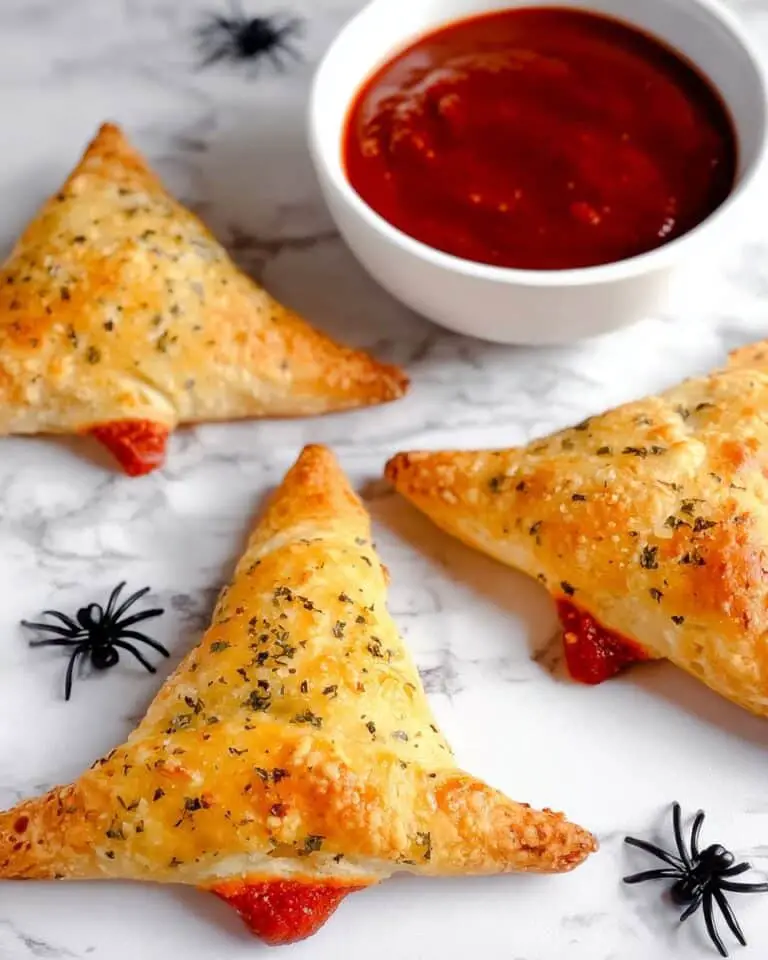Fresh, flavorful, and almost impossibly satisfying, Traditional Vietnamese Spring Rolls (Goi Cuon) are one of those recipes that transports you straight to the vibrant streets of Saigon with your very first bite. Packed with herbs, crisp veggies, tender pork, and shrimp—all wrapped up in silky rice paper—these spring rolls let you truly taste the balance and brightness of Vietnamese cuisine.
Why You’ll Love This Recipe
- Unbelievably Fresh: Every bite bursts with crisp lettuce, vibrant mint, and juicy shrimp, creating irresistible layers of texture and flavor.
- Customizable & Crowd-Pleasing: Perfect for gatherings, Traditional Vietnamese Spring Rolls (Goi Cuon) are easily adaptable to suit different tastes and dietary needs.
- Fun, Hands-On Experience: Rolling these spring rolls is interactive and fun—whether with friends, kids, or solo, it’s part of what makes this meal memorable.
- Addictive Peanut Sauce: The creamy, garlicky Vietnamese peanut dipping sauce is the finishing touch you’ll crave long after your plate is empty.
Ingredients You’ll Need
Don’t be intimidated by the ingredient list—each plays a vital role in creating those classic layers of flavor and freshness that define Traditional Vietnamese Spring Rolls (Goi Cuon). From tender pork belly to snappy cucumbers and the essential Three Ladies brand rice paper, this lineup lets you build something truly special.
- Rice Paper (Bánh Tráng): The delicate wrapper that pulls everything together—using a trusted brand like Three Ladies makes rolling easy and break-free.
- Pork Belly: Adds rich, savory depth and forms the hearty base of every roll; slice it thinly after cooking for best texture.
- Shrimp: Classic in Goi Cuon, the bright, sweet flavor and color are both essential—halved for the perfect bite and pretty presentation.
- Vermicelli Noodles: Light, bouncy noodles soak up the flavors and give spring rolls their signature chew.
- Lettuce: Provides freshness and structure; I love using sturdy butter or green leaf lettuce.
- Cucumber (Julienned): Crisp and refreshing, cucumber brings crunch and a subtle sweetness.
- Fresh Mint: This is what brings each bite fully alive—don’t be shy here!
- Vietnamese Peanut Sauce: A creamy, umami-rich blend of hoisin, peanut butter, garlic, and roasted peanuts for dipping nirvana.
Variations
One of the very best things about Traditional Vietnamese Spring Rolls (Goi Cuon) is how endlessly customizable they are. Whether you’re working around food sensitivities or simply want to try something new, this dish welcomes your creativity in delicious ways!
- Vegetarian Delight: Swap out the pork and shrimp for tofu, marinated mushrooms, or just load up on more veggies for a lighter, plant-powered version.
- Herbal Adventure: Add Thai basil, cilantro, or shiso leaves alongside the mint for an even bigger herbal punch.
- Protein Flexibility: Use sliced grilled chicken, beef, or even crispy tempeh if you want a different protein boost.
- Gluten-Free Peanut Sauce: Ensure your hoisin sauce is gluten-free for a completely celiac-friendly dipping experience.
How to Make Traditional Vietnamese Spring Rolls (Goi Cuon)
Step 1: Prepare the Vietnamese Peanut Sauce
Start by making the crave-worthy peanut dipping sauce! In a small saucepan, heat a splash of oil and sauté the garlic just until fragrant—watch closely, as garlic cooks quickly. Add in hoisin sauce and peanut butter for richness, then water to thin everything out. Stir in your cornstarch slurry and simmer until the sauce thickens and coats a spoon. Pour it into your serving bowl and top with a generous sprinkle of crushed peanuts right before you’re ready to eat.
Step 2: Cook the Pork Belly
Bring a large pot of water to a boil and add your pork belly. Let it cook gently for around an hour until tender and fully cooked (160°F internal temperature is your magic number). Remove, let rest for about 10 minutes, then shave off the skin and slice it as thinly as you can—the thinner the better for easy rolling.
Step 3: Cook the Noodles and Shrimp
While your pork belly simmers away, cook your vermicelli noodles in boiling water for 2-3 minutes—taste for perfect doneness. Rinse and set aside. In the same pot, boil your shrimp until they turn a vibrant orange (about 2-3 minutes). Let cool, then slice each shrimp in half lengthwise for that signature look and bite.
Step 4: Prepare the Vegetables and Herbs
While things cool, slice your cucumber into thin julienne sticks and wash/dry your lettuce and mint thoroughly. Organize all your fillings on a platter or large cutting board to streamline the rolling process later—it makes assembly so much easier and more fun!
Step 5: Slice and Prep the Pork Belly
Once your pork has rested and cooled, remove the skin if desired and slice the meat paper-thin, about 1 inch wide. This shape nestles perfectly inside each roll, making everything easier to eat and even more beautiful inside the wrapper.
Step 6: Assemble the Spring Rolls
Here’s where the magic happens! Fill a shallow dish with warm water. Working one at a time, gently dip a rice paper round until it’s just pliable. Lay it flat on a plate, then stack your fillings at one end: lettuce, mint, cucumber, noodles, and a strip of pork belly. Start to roll tightly, then, about halfway through, lay 3 halved shrimp pink side down (for that signature look). Tuck in the sides, finish rolling, and repeat! You’ll develop a rhythm in no time—don’t worry if the first ones aren’t picture-perfect.
Pro Tips for Making Traditional Vietnamese Spring Rolls (Goi Cuon)
- Rice Paper Brand Matters: Always use a reliable brand like Three Ladies for the most seamless rolling experience—lower quality wrappers often break or become too sticky.
- Perfect Hydration Technique: Dip each rice paper sheet into warm water for just a few seconds—it should be pliable but not overly soft when you start assembling, as it softens more as you work.
- Assembly Line Setup: Prepare all your fillings before you start rolling. This organization speeds things up and makes rolling less messy and more enjoyable!
- Shrimp Placement for Presentation: Placing the shrimp pink side down halfway through the roll ensures those beautiful, restaurant-style pops of color through the translucent wrapper.
How to Serve Traditional Vietnamese Spring Rolls (Goi Cuon)
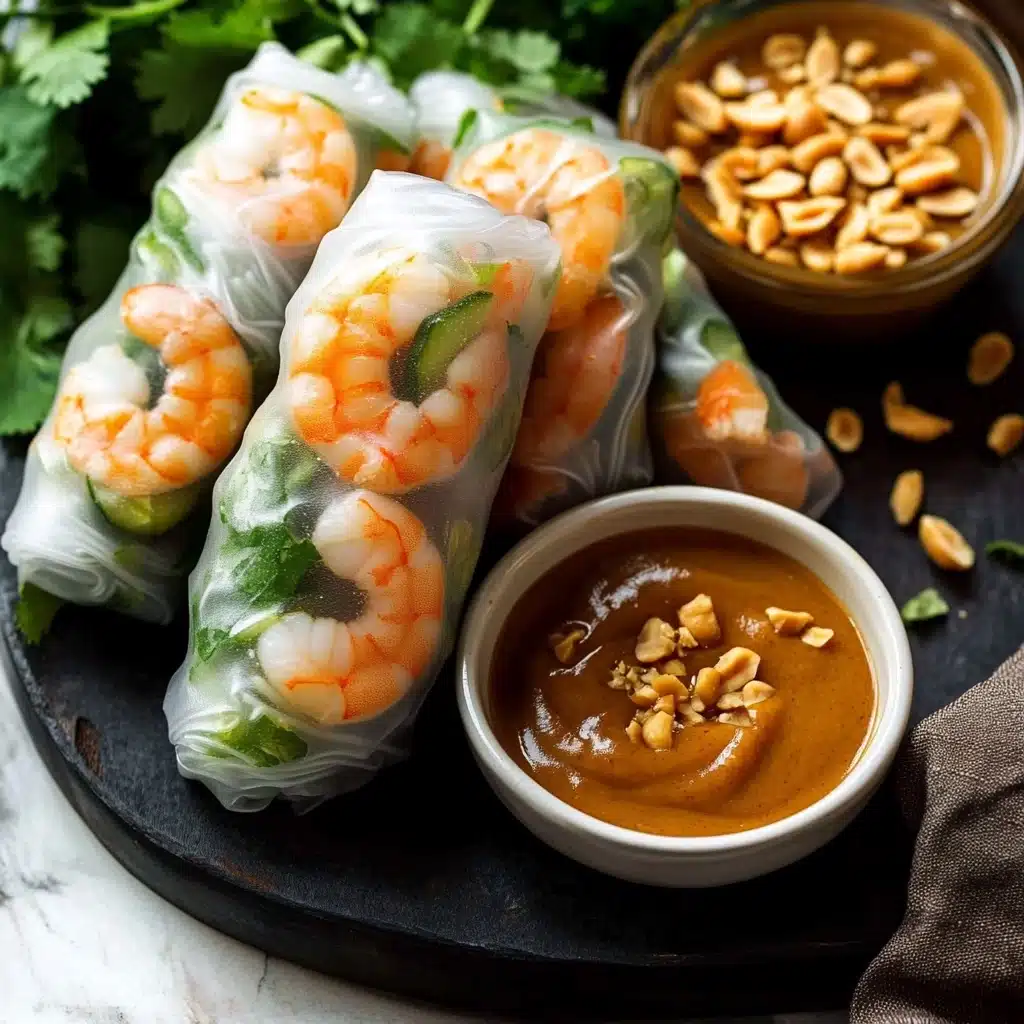
Garnishes
Garnish your Traditional Vietnamese Spring Rolls (Goi Cuon) with extra fresh mint leaves, a scatter of chopped roasted peanuts, or even a few sprigs of Thai basil for a pop of color and burst of aroma. Serve the peanut sauce on the side, and don’t forget a few lime wedges for an extra zing if you love a bit of brightness!
Side Dishes
These spring rolls shine with classic Vietnamese accompaniments—think a crunchy green papaya salad, sweet-sour pickled vegetables, or even a bowl of steaming pho broth. For a quick weeknight feast, a side of crispy shallot rice or chopped fresh fruit keeps the table lively and balanced.
Creative Ways to Present
Serve your Traditional Vietnamese Spring Rolls (Goi Cuon) on a big platter, rolls lined up like colorful little logs, or go family-style with a DIY rolling station, letting everyone customize their own. Add edible flowers or thin chili slices for a festive touch at parties—these spring rolls are as much a feast for the eyes as they are for your taste buds!
Make Ahead and Storage
Storing Leftovers
If you happen to have any leftover Traditional Vietnamese Spring Rolls (Goi Cuon) (lucky you!), wrap them individually in plastic wrap to keep them from drying out. Store in an airtight container in the refrigerator—they’re best enjoyed within a day, as the wrappers can get a little chewy after sitting too long.
Freezing
These spring rolls are at their peak fresh from the counter, and unfortunately, freezing isn’t recommended. The rice paper tends to turn tough or mushy once thawed, and the crisp veggies lose their vibrant bite. It’s truly a dish to be enjoyed the day you make them!
Reheating
Traditional Vietnamese Spring Rolls (Goi Cuon) are meant to be served cold or at room temperature, so reheating isn’t necessary. If you’d like to refresh them, let them sit at room temp for 10-15 minutes out of the fridge, covered with a slightly damp paper towel to restore some of the softness to the wrappers.
FAQs
-
What’s the difference between Traditional Vietnamese Spring Rolls (Goi Cuon) and fried spring rolls?
Goi Cuon are made fresh with soft, hydrated rice paper wrappers and filled with fresh vegetables, herbs, pork, and shrimp. They’re light and refreshing! In contrast, fried spring rolls use a wheat-based wrapper and are deep-fried for a crispy, golden exterior—totally different textures and flavors.
-
Can I make Traditional Vietnamese Spring Rolls (Goi Cuon) in advance?
You can prep all the fillings—cooked pork, shrimp, noodles, and veggies—ahead of time, but it’s best to assemble the rolls the day you plan to serve them. If you want to make them a few hours ahead, keep them tightly wrapped and refrigerated until ready to eat for maximum freshness.
-
What other sauces can I serve with these spring rolls?
While the classic Vietnamese peanut sauce is always a winner, you can serve nuoc cham (a tangy, garlicky fish sauce dip), chili-garlic sauce, or even sweet chili sauce. Mix and match for a dipping platter!
-
My rice paper keeps tearing—what am I doing wrong?
If your rice paper is tearing, you might be soaking it too long or using a lower-quality brand. Dip it quickly in warm water until pliable but not overly soft, and always try to use a reputable brand like Three Ladies for best results.
Final Thoughts
There’s just something magical about gathering with friends or family and rolling up a plateful of Traditional Vietnamese Spring Rolls (Goi Cuon). They’re so much more than just a dish—they’re an experience bursting with color, crunch, and joy. Give them a try, and don’t be surprised if they become a regularly requested favorite in your home!
Print
Traditional Vietnamese Spring Rolls Recipe
- Prep Time: 1 hour
- Cook Time: 15 minutes
- Total Time: 1 hour 15 minutes
- Yield: 4 people
- Category: Stovetop
- Method: Stovetop
- Cuisine: Vietnamese
Description
Learn how to make traditional Vietnamese spring rolls, also known as Goi Cuon, with a delicious homemade Vietnamese peanut sauce. These fresh and flavorful spring rolls are perfect for a light and refreshing meal.
Ingredients
Vietnamese Peanut Sauce
- 2 cloves garlic, minced
- 1/4 cup hoisin sauce
- 1 tbsp peanut butter
- 1 cup water
- 1 tsp corn starch
- 1 tbsp roasted peanuts, optional, chopped into small pieces
Spring Rolls
- 1 lb pork belly, thinly sliced
- 1 lb shrimp, halved
- 5 oz vermicelli noodles
- 12 pieces rice paper
- 1 head lettuce
- 1 cucumber, julienned
- mint to taste
Instructions
- Vietnamese Peanut Sauce – Heat a tablespoon of oil over medium heat. Add the garlic and cook for 30 seconds. Add hoisin sauce and peanut butter. Saute for another 30 seconds. Add the water and bring it up to a boil. Mix corn starch with 1 tbsp of water and add to the sauce. Simmer until it thickens (1-2 minutes). Pour it into a bowl and set aside. Top with peanuts right before serving.
- Spring Rolls – Bring 8 cups of water to a boil and add in the pork belly. Cook the pork belly in boiling water for an hour or until the internal temperature is 160 degrees F. While the pork belly is cooking, bring 6 cups of water to a boil in a separate pot. Add in the vermicelli noodles and cook for 2-3 minutes. Sample the noodles to make sure they are done. Set aside. After you cook the vermicelli noodles, bring 6 cups of water to a boil in the same pot and add in the shrimp. Cook the shrimp for 2-3 minutes or until the shrimp turns orange and the meat is orange and white. Set aside to rest for 10 minutes. Slice the shrimp in half. Slice all your vegetables at this point. Slice your cucumbers into thin pieces. Once the pork belly is done, set it aside to rest for 10 minutes until it is cool enough to handle. Shave off the skin and then slice it into thin pieces. Create the spring rolls by hydrating the rice paper, laying the ingredients, and rolling tightly.
Notes
- Update 4/30/25 – Use Three Ladies brand rice paper for best results.
- For instructions on how to properly hydrate rice paper, refer to the blog post.

